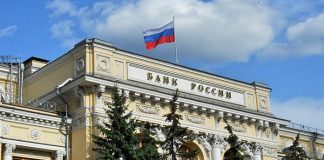Review: The People’s Train
By Tom Keneally, Vintage Books, $32.95
TOM KENEALLY’S The People’s Train is an exhilarating story of early 20th century radicalism, friendship and love that traverses three continents, and manages to link Brisbane and Bolshevism.
The train of the title doesn’t figure much in the story—it is a model monorail developed in Australia by a Russian exile in the second decade of the 20th century. Rybukov is among a number of escapees from Tsarist rule, of whom the principal actor is Artem—aka “Tom”—Samsurov, whose (translated) memoirs make up the first part of Keneally’s novel.
Samsurov is closely based on the real character of Artem Sergeiev, a Bolshevik organiser in the Ukraine, who escapes from a Siberian prison camp after the Tsar’s repression of the 1905 Revolution.
He spends six years in Brisbane before returning to Russia in 1917 in time to be elected to the Bolshevik Central Committee and play a role in the October insurrection.
But when Artem first arrives in Brisbane in 1911, he wonders whether this is already “a working man’s paradise, without a revolution”, not least because “even the poor do not eat horsemeat”. Such illusions shatter when he witnesses workers and their children dining on bread with lard, and experiences firsthand police suppression of tramway workers protesting for the right to wear union badges to work.
Artem throws himself into the local labour movement, addressing meetings in the lead up to the 1912 General Strike. He sets to work radicalising Brisbane’s growing Russian community, establishing a library and a printing press where he produces a newspaper, Izvestia.
Artem survives a two month stint in Brisbane’s Boggo Road jail after participating in an “outdoor meeting” of the Australian Socialist Party. While there, he writes an article for a Russian socialist publication titled, “Australia: Lucky Country?”
His writings are peppered with observations about the limitations of Laborism, not least when WWI is brewing, and it is obvious that neither Queensland Labor Premier TJ Ryan, nor Prime Minister Andrew Fisher will prevent young men being sent across the world to their deaths.
Along the way, Artem meets Hope Mockridge, an attractive lawyer and socialist convert whose husband is part of high society, and with whom he wrestles with the problems of “bourgeois love” and “bourgeois jealousy”.
There is also the elderly but militant Amelia Pethick, President of the Typists and Secretarial Services Union, and Paddy Dykes, a Broken Hill miner turned journalist who accompanies him back to Russia following the February 1917 Revolution.
The overthrow of Russian Tsar Nicholas II and their return to Russia signals the end of Artem’s narration. When they set sail for Russia, Paddy Dykes who takes up the story.
Through this split narrative device, Keneally cleverly maintains the vantage point of a sympathetic outsider participating in events.
Account of revolution
Dykes pens a positive account of the revolution, and despite his very limited Russian, optimistically records his meetings with people for whom “everything—absolutely everything—seemed to be just around the corner”.
Dykes falls for Artem’s recently widowed sister, who soon joins them in the Ukrainian city of Kharkov. Once there, she revels in organising raids on flour hoarders who profit while the masses starve.
We are then taken through the July days and the successful resistance to the Kornilov coup, before the action moves to Petrograd, where brief appearances are made by Bolshevik leaders like Lenin, Trotsky, Zinoviev and Stalin.
However, the second half of the book lacks the political engagement of the first. Perhaps Keneally is aware of this, having Dykes acknowledging that he is no John Reed, after bumping into him outside the Council of Soviets in Petrograd. Reed was a radical US journalist and activist who wrote Ten Days That Shook the World and threw himself into defending the revolution.
The book culminates with the fall of the Winter Palace, but the brutality of a single event, designed to illustrate, in Artem’s words, that “we can have a revolution, but it will take time to overthrow the squalor of the human soul”, gives an unnecessary and disproportionate bitter twist to the end.
Nevertheless, on balance Keneally has written a historic novel which entertains, informs and inspires, and which deserves the kind of accolades his Schindler’s Ark received back in 1982.
It will be worth waiting for the sequel that Keneally has foreshadowed, which he says will cover the Civil War, when the real Sergeiv was killed.
By Mark Goudkamp





